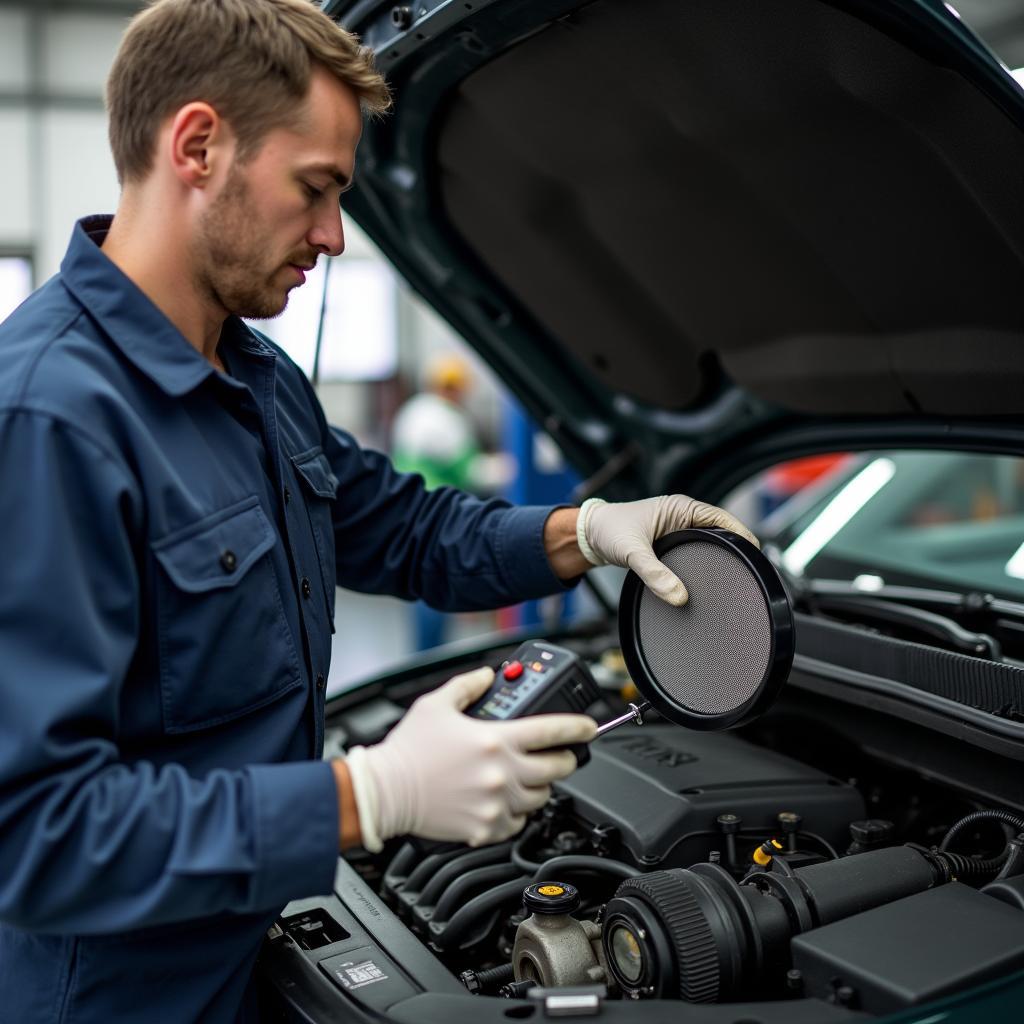If the “Diesel Particulate Filter Additive Low” message has appeared in your vehicle, prompt action is required. This problem, which primarily occurs in diesel vehicles, should not be ignored. In this article, we explain in plain terms what the additive is, what causes the warning message, and what solutions are available.
What is Diesel Particulate Filter Additive and Why is it Important?
The additive for the particulate filter is a fluid that is mixed with diesel fuel. It plays a crucial role in cleaning the Diesel Particulate Filter (DPF). The DPF filters soot particles from your vehicle’s exhaust gases to reduce environmental pollution. The additive lowers the combustion temperature of the soot particles, allowing them to burn off in the filter at lower temperatures.
Causes for the “Diesel Particulate Filter Additive Low” Message
The “Diesel Particulate Filter Additive Low” message means that the additive level in the tank has fallen below a critical value. This can be due to various reasons:
- Natural Consumption: The additive is consumed over time and needs to be refilled regularly. The refilling intervals are vehicle-specific and can be found in the owner’s manual.
- Defective Sensors: Sensors monitor the additive level and can become faulty over time. A defective sensor can cause the message to display even if there is still enough additive.
- Leaks: Leaks in the additive tank or lines can lead to additive loss.
- Faulty Dosing: The dosing of the additive can be affected by issues with the injection system or the engine control unit.
Consequences of a Low Additive Level
A low additive level can have serious consequences for your vehicle:
- Clogging of the Particulate Filter: Without enough additive, the DPF cannot regenerate efficiently. This leads to clogging of the filter and a loss of engine power.
- Engine Damage: In the worst-case scenario, a clogged DPF can lead to engine damage.
- Increased Exhaust Emissions: A clogged DPF can increase your vehicle’s exhaust emissions, which has negative environmental effects.
Solutions for a Low Particulate Filter Additive Level
haltern adac fahrsicherheitstraining
As soon as the “Diesel Particulate Filter Additive Low” message appears, you should take action as quickly as possible. The following solutions are available:
- Refill Additive: If the additive level is simply low, it can be refilled at a workshop.
- Check Sensors: A professional can check the sensors of the additive system and replace defective ones.
- Fix Leaks: Leaks in the additive system must be located and repaired.
- Professional DPF Cleaning: If the DPF is already clogged, professional cleaning at a workshop can help.
Professional Help for DPF Additive System Issues
The “Diesel Particulate Filter Additive Low” message should not be taken lightly. We at AutoRepairAid recommend that you always visit a specialized workshop for problems with the DPF additive system. Our experienced mechanics are happy to assist you and ensure that your vehicle runs perfectly and environmentally friendly again. Contact us today!
 Mechanic inspecting the diesel particulate filter
Mechanic inspecting the diesel particulate filter
Frequently Asked Questions about “Low DPF Additive”
How often do I need to refill the additive?
The refilling intervals for the additive are vehicle-specific and can be found in your vehicle’s owner’s manual. Typically, the interval is between 60,000 and 120,000 kilometers.
How much does refilling the additive cost?
The cost of refilling the additive varies depending on the vehicle model and workshop. Generally, the costs are between 100 and 200 Euros.
Can I refill the additive myself?
Refilling the additive is a complex process and should only be performed by a specialized workshop.
How can I prevent the “Diesel Particulate Filter Additive Low” message from appearing?
By adhering to the manufacturer’s recommended maintenance intervals and regularly taking longer drives at higher engine speeds, you can help ensure the DPF is adequately regenerated and the life of the additive is extended.
Other Interesting Topics on Vehicle Maintenance
- Maintaining the Diesel Particulate Filter: Tips and Tricks
- Common Exhaust System Faults and How to Avoid Them
- How to Optimize Your Diesel Engine’s Performance
Do you have more questions about “Low DPF Additive” or need help with your vehicle’s repair? Don’t hesitate to contact us! We at AutoRepairAid are here to help you with advice and assistance.
